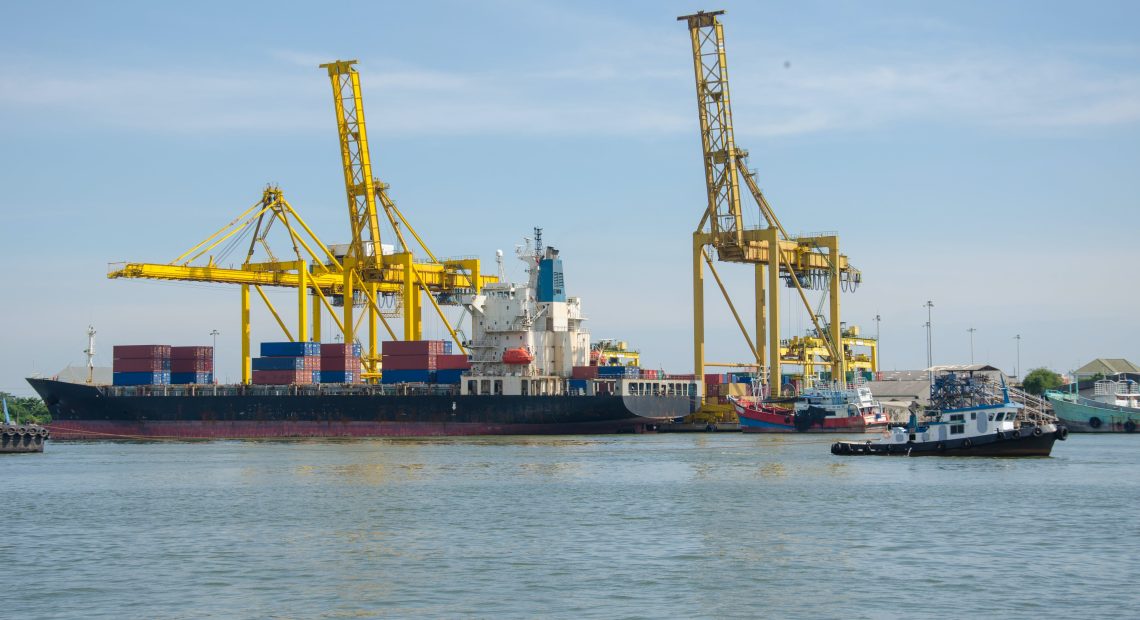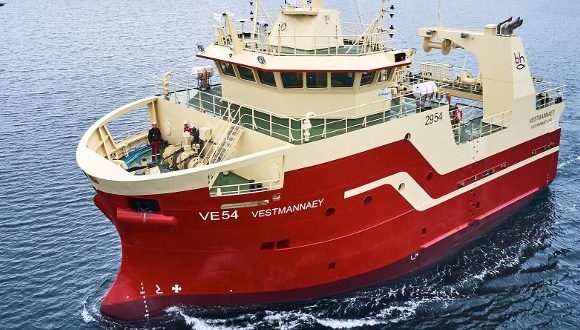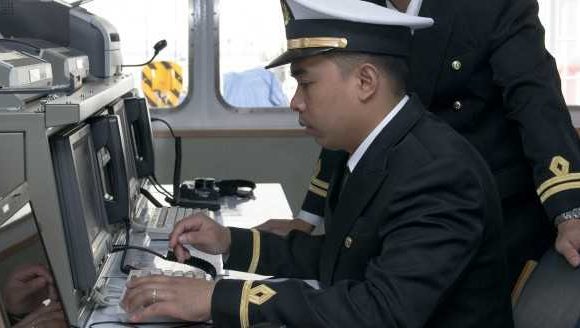Emerging Technologies for Sustainable Shipping

Ahoy, fellow seafarers and curious minds! As we cast our gaze across the vast expanse of the maritime horizon, a new symphony of innovation echoes through the waves. In this nautical journey, we set sail into the realm of emerging technologies for sustainable shipping—a maritime adventure where wind, hydrogen, and autonomy dance together, promising to revolutionise the industry in the gentle embrace of eco-friendliness.
Winds of Change: Wind-Assisted Propulsion
Picture this: sails billowing in the wind, harnessing the very force that once guided historic voyages across uncharted seas. Today, wind-assisted propulsion stands at the forefront of sustainable shipping technologies, offering a nod to the past with a vision for the future.
Cutting-edge technologies, such as rotor sails and wing sails, are designed to capture and utilise the power of the wind, reducing reliance on traditional propulsion systems. Rotor sails, resembling spinning columns, and wing sails, akin to airplane wings, can be seamlessly integrated into existing vessels, turning them into eco-friendly hybrids. It’s a poetic dance between nature and technology, where the winds of change become the driving force towards a greener maritime future.
Hydrogen: The Green Fuel of the High Seas
As we sail deeper into the sea of innovation, hydrogen emerges as a beacon of hope for sustainable shipping. Hydrogen fuel cells, akin to the beating heart of maritime machinery, have the potential to transform the way ships are powered, offering a cleaner and more efficient alternative to traditional fuels.
In a hydrogen-powered system, hydrogen gas is combined with oxygen from the air, generating electricity to propel the vessel. The by-product? Pure water—a stark contrast to the carbon emissions of conventional fuels. With ongoing research and development, hydrogen fuel cells are poised to become the green fuel of the high seas, reducing environmental impact and steering the maritime industry towards a more sustainable course.
Navigating the Seas with Autonomous Vessels
As the maritime narrative unfolds, autonomous vessels emerge on the horizon, promising a sea change in how we navigate the oceans. Imagine ships sailing the seas without a human hand at the helm—a maritime ballet choreographed by artificial intelligence and cutting-edge technology.
Autonomous vessels, equipped with sensors, cameras, and advanced algorithms, can navigate the seas with efficiency and precision, optimising routes and avoiding collisions. By eliminating the need for a crew on board, these vessels not only reduce operational costs but also open up new possibilities for sustainable shipping. The autonomous era is dawning, inviting us to embrace a maritime future where technology and eco-consciousness sail hand in hand.
Combined Technologies for Maximum Impact
In our exploration of sustainable shipping technologies, the symphony of innovation crescendos as we explore the potential of integrating multiple technologies for maximum impact. Picture a vessel adorned with wind-assisted propulsion systems, powered by hydrogen fuel cells, and guided by autonomous navigation—a harmonious integration of technologies creating a maritime masterpiece.
Combining wind-assisted propulsion with hydrogen fuel cells amplifies the eco-friendly benefits. The wind harnesses the power of nature, while hydrogen serves as a clean and efficient energy source. Together, they create a maritime synergy that not only reduces greenhouse gas emissions but also paves the way for a holistic approach to sustainable shipping.
Navigating the Technological Seas
As with any pioneering journey, challenges emerge on the technological horizon. The integration of emerging technologies requires significant investments, both in terms of financial resources and infrastructure. The need for standardised regulations and industry-wide collaboration poses hurdles that demand strategic navigation.
Furthermore, the acceptance and adaptation of these technologies within the maritime community play a crucial role in their successful implementation. Overcoming the resistance to change and fostering a culture of innovation become essential aspects of navigating the technological seas towards a sustainable maritime future.
The Final Destination: A Greener Tomorrow
In the closing act of our maritime odyssey, the vision of a greener tomorrow becomes clear on the horizon. Emerging technologies for sustainable shipping, from wind-assisted propulsion to hydrogen fuel cells and autonomous vessels, paint a picture of an industry transformed.
As we stand at the cusp of this maritime revolution, let us celebrate the ingenuity of human innovation and the harmonious integration of technology and sustainability. The seas are not just a passage for trade and exploration but a canvas where the strokes of emerging technologies create a masterpiece of eco-friendly maritime practices. The destination is clear—a greener tomorrow where the winds of change, hydrogen dreams, and autonomous visions propel us towards a sustainable and thriving maritime industry.
Shore Power and Green Infrastructure
The sustainability journey extends beyond the open seas to the very ports where vessels dock. Shore power, or cold ironing, is an innovative solution that allows ships to turn off their engines while berthed and connect to the local power grid. This not only reduces emissions in port areas but also minimises the environmental impact of vessels during layovers. Combined with green infrastructure initiatives, such as energy-efficient lighting, renewable energy sources, and eco-friendly port designs, ports can become pivotal players in fostering a more sustainable and eco-conscious maritime landscape.
Navigating Efficiency in Shipping Operations
In the realm of sustainable shipping, information is power, and harnessing the potential of big data and predictive analytics can revolutionise operational efficiency. By collecting and analyzing vast amounts of data on weather patterns, sea conditions, and vessel performance, shipping companies can optimise routes, improve fuel efficiency, and reduce environmental impact. The marriage of technology and data-driven decision-making not only enhances the overall efficiency of shipping operations but also contributes to a more sustainable and eco-friendly maritime industry.
Reducing Environmental Footprint
The journey towards sustainability extends to the very foundations of the maritime industry—shipbuilding. The concept of a circular economy, where materials and resources are reused, repurposed, and recycled, is gaining traction in ship construction. Sustainable ship design, modular construction techniques, and the use of recycled materials contribute to reducing the environmental footprint of new vessels. Embracing the principles of a circular economy in shipbuilding not only addresses the end-of-life challenges of ships but also ensures that each vessel is a step towards a more sustainable and eco-friendly maritime future.
Facts and Statistics
Wind-Assisted Propulsion: Rotor sails and wing sails harness wind power to reduce reliance on traditional propulsion systems.
Wind-assisted propulsion can be seamlessly integrated into existing vessels, transforming them into eco-friendly hybrids.
Studies like Lindstad et al. (2018) assess and highlight the potential of wind propulsion technologies.
Hydrogen Fuel Cells: Hydrogen fuel cells have the potential to transform ship propulsion, providing a cleaner and more efficient alternative to traditional fuels.
Hydrogen-powered systems generate electricity, propelling vessels with the by-product being pure water.
Ongoing research and development aim to make hydrogen fuel cells a mainstream green fuel for the maritime industry (Miao et al., 2019).
Autonomous Vessels: Autonomous vessels, equipped with sensors and advanced algorithms, optimise routes and avoid collisions.
Eliminating the need for a crew on board reduces operational costs and opens up possibilities for sustainable shipping (Lee et al., 2018).
Combination of Technologies: Integrating wind-assisted propulsion with hydrogen fuel cells amplifies eco-friendly benefits, creating a holistic approach to sustainable shipping.
Combined technologies, such as wind and hydrogen, contribute to a more sustainable and efficient maritime industry.
Shore Power and Green Infrastructure: Shore power, or cold ironing, allows ships to connect to the local power grid while berthed, reducing emissions in port areas.
Green infrastructure initiatives, including energy-efficient lighting and renewable energy sources, further contribute to sustainable port operations.
Efficiency in Shipping Operations: Big data and predictive analytics optimise routes, improve fuel efficiency, and reduce environmental impact on shipping operations.
Harnessing information through technology enhances overall efficiency, contributing to a more sustainable maritime industry.
Reducing Environmental Footprint in Shipbuilding: The circular economy concept in shipbuilding involves reusing, repurposing, and recycling materials to reduce the environmental footprint.
Sustainable ship design, modular construction, and the use of recycled materials contribute to a more environmentally friendly maritime future.
References
IMO. (2020). “Initial GHG Strategy.” International Maritime Organization.
Lindstad, H., Strand, J., & Lee, L. (2018). “Assessment of wind propulsion technologies for ships.” Transportation Research Part D: Transport and Environment, 58, 316-328.
Klöwer, M., Ürge-Vorsatz, D., & Mirasgedis, S. (2018). “Decarbonising the maritime transport sector.” Wiley Interdisciplinary Reviews: Energy and Environment, 7(5), e307.
Miao, W., Lai, Y. H., Huang, G. H., & Xu, Y. (2019). “A review of alternative fuels for ship: Technological, environmental, and economic perspectives.” Energy Conversion and Management, 197, 111860.
Yang, H., Wei, J., Zhang, W., Song, W., & Yu, Y. (2019). “A review of research on solar-powered air conditioning system.” Renewable and Sustainable Energy Reviews, 113, 109238.
Lee, K., Lee, J., Kim, S., Lee, D., & Kim, J. (2018). “A review on autonomous ship technologies: A decade of improvements.” Ocean Engineering, 169, 418-432.
Alternative technologies
World Maritime theme 2022: New technologies for greener shipping















